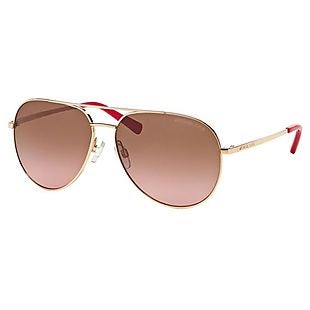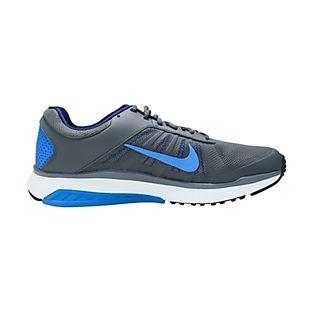New York Is a Hub in a Surging Heroin Trade
The flood of heroin coming into and going out of New York City has surged to the highest levels in more than two decades, alarming law enforcement officials who say that bigger players are now entering the market to sell the drug here and to feed a growing appetite along the East Coast.
The amount of heroin seized in investigations involving the city’s special narcotics prosecutor has already surpassed last year’s totals, and is higher than any year going back to 1991.
The drug makes its way here in trucks rumbling north from Mexico; as they get closer to New York, they park at truck stops or warehouses to transfer loads of heroin to cars bound for mills in the Bronx or Upper Manhattan and, eventually, to users along the Eastern Seaboard at prices ranging from $6 to $10 per glassine envelope.
The rise in heroin use nationwide has been well documented, as the drug has created addicts and caused the deaths of well-known figures, like the actor Philip Seymour Hoffman, and young people in middle-class families from Staten Island to Vermont.

What the authorities are seeing now is the outgrowth of all that drug abuse, said Bridget G. Brennan, the special narcotics prosecutor whose office deals primarily with large-scale operations: far-flung drug organizations accelerating to meet heroin demand by setting up New York operations that are growing in sophistication and output.
“We’re kind of the head of the Hydra,” said Ms. Brennan, who is scheduled to testify about heroin trends during a City Council budget hearing on Tuesday. “This is highly organized, high volume, and it’s being moved much more efficiently and effectively to reach out to a broader user base.”
Her office recorded more than 288 pounds of heroin seized in the first four months of 2014, a figure that does not account for the everyday, street-level drug deals in the city. On Staten Island, where dealers are often users themselves and the rate of overdose is the city’s highest, the office has no heroin cases because there are few big-time players there, authorities said.
Nonetheless, in arrests of users and dealers, Staten Island narcotics detectives have recorded a steep increase in the amount of heroin taken off the street there so far this year — up 61 percent compared with 2013. Detectives are also beginning to find organized networks of dealers there, in what had long been a haven of low crime rates and unlocked doors.
“It’s cheap, it’s potent and there’s a user demand here right now and they’re flooding the market,” said James J. Hunt, who heads the Drug Enforcement Administration’s New York office. “In my time, we’ve never seen the amount of large heroin seizures like this.”
Roughly 35 percent of heroin seized by the Drug Enforcement Administration nationwide since October was confiscated by agents in New York State. In years past, the state has accounted for about one-fifth of heroin seizures nationwide.
Mr. Hunt said that distributors of drugs favor locating hubs in New York City for the same reason that business have flocked here for centuries: a big local market and easy access to other East Coast areas.
Nearly all of the heroin feeding the city passes through the Bronx and Upper Manhattan, where it is divided up into glassine bags in so-called heroin mills, stamped with a brand and bundled for distribution and sale. One recent raid, in March, turned up a piece of paper listing possible brand names, as well as those already used, and stamped bags with an image of Heisenberg, a character from the TV show “Breaking Bad.”
For users in the city, that proximity to the distribution points means lower prices than in other areas of the country. Mr. Hunt said a kilogram of heroin could go for as little as $40,000 in New York City but as much as $80,000 in Springfield, Mass. “Every pair of hands it goes through, you’re taking on money,” he said.
Ms. Brennan said that in many of her cases, the Sinaloa cartel, Mexico’s largest, is exporting the heroin using familiar cocaine trafficking routes and arranging to have the drug transported in otherwise legitimate tractor-trailer trucks. The ability of the cartel — known for distributing cocaine and marijuana — to capitalize on a lucrative market for heroin does not appear to have been dampened by the February arrest of its leader, Joaquín Guzmán Loera, known as El Chapo. Other organizations have also joined in, Mr. Hunt said.
Across New York City, the Police Department logged seizures of 786 pounds of heroin in 2013, the highest such number in at least five years. So far this year, officers have seized 217 pounds of heroin, versus 139 pounds last year at this time, according to department statistics.
The arrest of the two suspected Bronx-based traffickers announced on Monday provided a small glimpse into a typical heroin distribution center.
The suspects, Guillermo Esteban Margarin, 33, and Edualin Tapia, 28, carried the drug from a seventh-floor Bronx apartment near Interstate 87 in suitcases and a white box, the authorities said. The men drove the drugs up to a Hartford safe house, one in a Jeep Cherokee and the other in an Acura sedan, the authorities said. They were arrested there on Friday.
A search the next day of a storage unit off Interstate 95 in the Bronx turned up a pair of assault rifles, a handgun and kilogram presses, which are used to create packages of drugs that mimic the look of uncut heroin just delivered from across the border, Ms. Brennan said.
Both men were charged with felony drug possession and conspiracy; they are awaiting extradition from Hartford to New York.
In : #EssexCounty
Tags: new york is a hub in a surging heroin trade david goodman ny region new york times
comments powered by Disqus


























































































